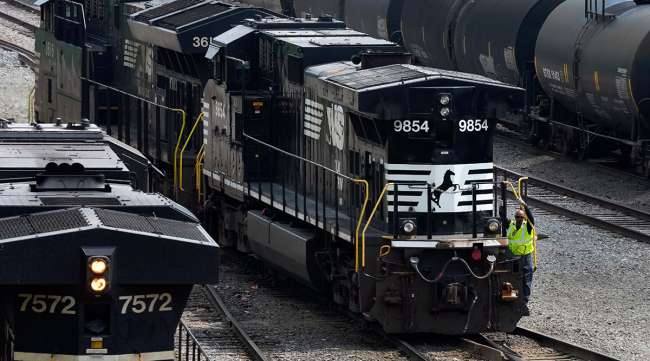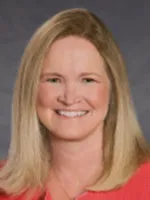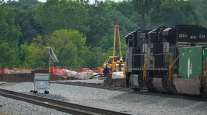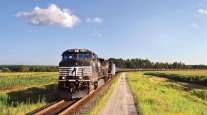Activist Investor Wins 3 Norfolk Southern Board Seats

[Stay on top of transportation news: Get TTNews in your inbox.]
Norfolk Southern’s CEO will be under more pressure to improve profits after the railroad’s shareholders voted May 9 to elect three of the board members an activist investor nominated, but he won’t be fired right away.
Ancora Holdings had nominated seven directors as part of a bid to take control of the railroad’s 13-member board and overhaul its operations. The key support Ancora picked up from major investors, two major rail unions and proxy advisory firms wasn’t enough to persuade shareholders to elect Ancora’s entire slate.
Ancora’s Jim Chadwick blamed passive investors for failing to support the investors’ nominees. Chadwick promised to hold CEO Alan Shaw accountable and keep fighting to improve the railroad.
“For the passive investors. If anything should go wrong here and there’s another derailment and people die, this is on you,” Chadwick said. “You ignored the recommendation of the proxy advisers, the unions, the largest customer of the company. You gave us literally no support, and we still won three board seats without you. What happens at Norfolk Southern now is on your firms and your conscience.”

Shaw
The board members voted out included Chair Amy Miles.
Norfolk Southern’s stock price, which soared after Ancora announced its campaign to oust Shaw, immediately fell after the results of the vote were announced. It was trading down 3% at $224.84 the morning of May 9.
Shaw’s plan calls for keeping more workers on hand during a downturn to make sure the railroad is prepared to handle the eventual rebound in shipments once the economy recovers and continuing to invest in safety improvements to prevent derailments. He received the backing of the rest of rail labor, several key regulators and a number of the railroad’s customers.

Miles
“Norfolk Southern has persevered through several challenges over the last year. We have met every challenge and never lost sight of where we are taking our powerful franchise,” Shaw said. “We are keeping our promises and delivering tangible results, and there is more to do.”
Ancora had argued that Norfolk Southern should implement the industry standard Precision Scheduled Railroading operating model that is designed to minimize the number of workers, locomotives and railcars a railroad needs.
RELATED: Norfolk Southern Urges Shareholders to Reject Takeover Plan
The Precision Scheduled Railroad operating model relies on running fewer, longer trains on a tighter schedule and switching cars between trains less often to streamline operations. Shaw had argued that running the railroad too lean would jeopardize the improvements in safety and service Norfolk Southern has seen since its disastrous February 2023 derailment in East Palestine, Ohio.
Rail unions have said they believe Precision Scheduled Railroading has made the industry more dangerous and derailments more likely because inspections are so rushed and preventive maintenance may be neglected.
To retread or not to retread, that is the question. For some maintenance managers, the debate between purchasing new tires or retreads is constant. In this episode, host Michael Freeze finds answers about tires with Alex Aguilar, senior training specialist at Bridgestone Americas. Tune in above or by going to RoadSigns.ttnews.com.
The Brotherhood of Locomotive Engineers and Trainmen union that backed Ancora encouraged Shaw to keep improving safety and consider adopting some of the proposals the investors made to expand the railroad’s pilot program to let workers use an anonymous federal safety hotline to report concerns and abandon all talk of trying to reduce the current two-person train crews down to one.
The leaders of the BLET union on Norfolk Southern — Dewayne Dehart, Jerry Sturdivant and Scott Bunten — said they were alarmed when Shaw said this spring that he would also implement a version of Precision Scheduled Railroading and they would call out decisions they deem bad for workers and investors.
“Alan Shaw and his team showed real leadership after the East Palestine disaster and made major moves to make the railroad safer and more competitive,” the BLET union officials said. “However, changes in his team and strategy in recent weeks left many stakeholders and shareholders feeling uncertain about the railroad’s future direction.”
For now, Shaw and the chief operating officer he just hired in March, John Orr, will have more time to prove their strategy will work. NS paid CPKC railroad $25 million to get permission to hire Orr. But if they don’t bring Norfolk Southern’s profit margins in line with the rest of the industry, their jobs could still be in jeopardy.
Want more news? Listen to today's daily briefing above or go here for more info
“Your CEO has missed earnings estimates for six quarters in a row and destroyed a town in our own state,” said Chadwick, whose firm is based in Ohio. “And if this underperformance continues, we will hold you accountable. But we will work with you for the mutual benefit of all stakeholders.”
Edward Jones analyst Jeff Windau said it’s clear Ancora is going to keep up the pressure on Shaw, and if results don’t improve, then the investors may nominate additional directors next year to try to take control of the board.
“The spotlight is still going to be there even though this election is over,” Windau said.
Ancora wanted to hire former UPS COO Jim Barber to be the railroad’s next CEO and former CSX railroad operating chief Jaimie Boychuk as the chief operating officer. Barber has said keeping more workers on hand during slower times is wasteful and compared it to UPS keeping all its seasonal workers it hires for the holiday season on the payroll year round.
The investors had projected their plan would cut more than $800 million in expenses in the first year and another $275 million by the end of three years. Ancora said it didn’t plan layoffs but wanted to use attrition to eliminate about 1,500 jobs over time.
Norfolk Southern has said its own plan to make the railroad more efficient would generate about $400 million in cost savings over two years and improve its profit margin. But analysts have said its profits might still lag behind the other major freight railroads because they are all working to get more efficient too.





